Elsa M.

Elsa M. is a member of The Royal Forums, where she took a moderation position between 2005 and 2006. She loves royal weddings, especially those of the old Holy Roman Empire families.
View all articles by Elsa M.A Fated Affair
"Agora é tarde; Inês é morta" (“It’s too late; Inês is dead”) is a Portuguese saying used in everyday life. By continuing to use it more than 550 years after Inês' death, people still evoke one of the most tragic heroines of all time, whose story is rooted not only in Portuguese history and language but also in universal myth and fable.
 Inês Pérez de Castro (ca. 1320-1355) was the daughter of the powerful Pedro Fernandes de Castro, an illegitimate grandson of King Sancho IV of Castile. She arrived in Portugal in 1340 as a lady-in-waiting to her cousin, Infanta Constança of Castile, who was to marry the heir to the Portuguese throne, Dom Pedro (son of King Dom Afonso IV). But immediately the crown prince set his eyes on Inês' “heron neck," he was in love with the noble lady. Even though he married the Castilian Infanta in 1340, he began to neglect his lawful wife and focussed his attention on Inês. The die was cast, and an irresistible love story was about to be written. Pedro was madly in love, and legend even says that he used to send his love letters through a pipe that carried water from the estate of Quinta do Pombal* to the Monastery of Santa Clara-a-Velha, where the beautiful lady was settled.
Inês Pérez de Castro (ca. 1320-1355) was the daughter of the powerful Pedro Fernandes de Castro, an illegitimate grandson of King Sancho IV of Castile. She arrived in Portugal in 1340 as a lady-in-waiting to her cousin, Infanta Constança of Castile, who was to marry the heir to the Portuguese throne, Dom Pedro (son of King Dom Afonso IV). But immediately the crown prince set his eyes on Inês' “heron neck," he was in love with the noble lady. Even though he married the Castilian Infanta in 1340, he began to neglect his lawful wife and focussed his attention on Inês. The die was cast, and an irresistible love story was about to be written. Pedro was madly in love, and legend even says that he used to send his love letters through a pipe that carried water from the estate of Quinta do Pombal* to the Monastery of Santa Clara-a-Velha, where the beautiful lady was settled.
In a cunning manoeuvre aimed at putting an end to her husband’s love affair, Constança invited Inês to be the godmother of her newly born son, Infante Dom Luís (who was born on 27 February 1340 and lived for just a few weeks), as in the eyes of the Catholic Church, this would make Inês a member of the family and would render her affair with Dom Pedro incestuous. However, the Princess' scheme did not have the desired effect; despite her efforts, as well as the King's later attempts to separate the lovers (by banishing Inês from Court and sending her back to Castile in 1344), the feelings of the couple for each other did not subside, and Pedro continued to visit Inês when she was away from the kingdom. Dona Constança, on the other hand, did not have long to live. She died on 13 November 1345, shortly after giving birth to her third child, Infante Dom Fernando (born on 31 October).
Once he was no longer married, Dom Pedro went after Inês, brought her back to Portugal and settled her in Coimbra, where they would live together openly. The lovers were closer than ever, and they went on to have four children: Afonso (who died in infancy), Beatriz (born around 1347), João (born in 1349), and Dinis (born in 1354). Meanwhile, the Prince became increasingly close to Inês' brothers (Álvaro and Fernando de Castro), who tried to convince him to claim the throne of Castile, thus endangering the already fragile relations between Portugal and that neighbouring kingdom. Soon the Prince (also a grandson of King Sancho IV of Castile) was persuaded by their arguments and declared himself a pretender to the thrones of León and Castile, taking advantage of the weak position of his cousin, Pedro of Castile, due to the intrigues created by the bastards of Alfonso XI.
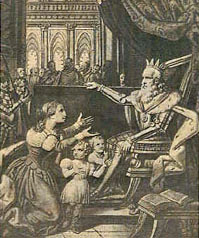 It became evident to the Portuguese King and aristocracy that the Castro clan would end up dragging the future monarch and his kingdom into the dynastic fights of their neighbours. Moreover, Dom Afonso IV and his courtiers secretly feared that at some time in the future Inês' sons would impugn the legitimacy of Infante Dom Fernando (the surviving son of Pedro and Constança), causing a civil war. Even worse, they were concerned that the Castros might make an attempt on the life of this frail little heir.
It became evident to the Portuguese King and aristocracy that the Castro clan would end up dragging the future monarch and his kingdom into the dynastic fights of their neighbours. Moreover, Dom Afonso IV and his courtiers secretly feared that at some time in the future Inês' sons would impugn the legitimacy of Infante Dom Fernando (the surviving son of Pedro and Constança), causing a civil war. Even worse, they were concerned that the Castros might make an attempt on the life of this frail little heir.
These fearsome prospects led the King and his advisers to look for ways to free the Prince from the damaging influence of the Castro clan, and the death of Inês started to be seen as a solution. Initially, Dom Afonso IV was reluctant to agree to such an extreme action against the mother of his grandchildren, but on 7 January 1355 (while Pedro was away from home), the King called his counsellors to a meeting in the Castle of Montemor-o-Velho, at the end of which he finally decided to send three of his courtiers - Pêro Coelho, Álvaro Gonçalves and Diogo Lopes Pacheco - to Coimbra, in order to kill Inês.
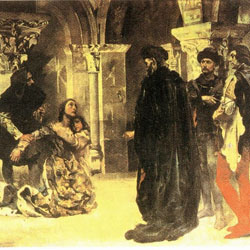 According to Cristóvão Rodrigues Acenheiro's Chronicles – which would inspire poets and novelists throughout history – as soon as they arrived, Inês appeared surrounded by her children and appealed to the Dom Afonso IV, who was thus struggling between the needs of the state and his feelings as a grandparent. Finally, he left the room, saying to the counsellors: "Do whatever you want". As soon as the King had turned his back, the sentence was carried out: Inês de Castro was executed.
According to Cristóvão Rodrigues Acenheiro's Chronicles – which would inspire poets and novelists throughout history – as soon as they arrived, Inês appeared surrounded by her children and appealed to the Dom Afonso IV, who was thus struggling between the needs of the state and his feelings as a grandparent. Finally, he left the room, saying to the counsellors: "Do whatever you want". As soon as the King had turned his back, the sentence was carried out: Inês de Castro was executed.
Although the assassination took place in Santa Clara-a-Velha (where the couple had been living together since Constança’s death), the myth associates Inês' tragedy with the Quinta das Lágrimas [Estate of Tears], and people believe that her blood still stains the red stone-bed of the spring on this estate, where she is said to have cried out for the last time, while being pierced by the daggers of the executioners.
Queen after Death
"Agora é tarde; Inês é morta" (“It’s too late; Inês is dead”) is a Portuguese saying used in everyday life. By continuing to use it more than 550 years after Inês' death, people still evoke one of the most tragic heroines of all time, whose story is rooted not only in Portuguese history and language but also in universal myth and fable.
 Inês Pérez de Castro (ca. 1320-1355) was the daughter of the powerful Pedro Fernandes de Castro, an illegitimate grandson of King Sancho IV of Castile. She arrived in Portugal in 1340 as a lady-in-waiting to her cousin, Infanta Constança of Castile, who was to marry the heir to the Portuguese throne, Dom Pedro (son of King Dom Afonso IV). But immediately the crown prince set his eyes on Inês' “heron neck," he was in love with the noble lady. Even though he married the Castilian Infanta in 1340, he began to neglect his lawful wife and focussed his attention on Inês. The die was cast, and an irresistible love story was about to be written. Pedro was madly in love, and legend even says that he used to send his love letters through a pipe that carried water from the estate of Quinta do Pombal* to the Monastery of Santa Clara-a-Velha, where the beautiful lady was settled.
Inês Pérez de Castro (ca. 1320-1355) was the daughter of the powerful Pedro Fernandes de Castro, an illegitimate grandson of King Sancho IV of Castile. She arrived in Portugal in 1340 as a lady-in-waiting to her cousin, Infanta Constança of Castile, who was to marry the heir to the Portuguese throne, Dom Pedro (son of King Dom Afonso IV). But immediately the crown prince set his eyes on Inês' “heron neck," he was in love with the noble lady. Even though he married the Castilian Infanta in 1340, he began to neglect his lawful wife and focussed his attention on Inês. The die was cast, and an irresistible love story was about to be written. Pedro was madly in love, and legend even says that he used to send his love letters through a pipe that carried water from the estate of Quinta do Pombal* to the Monastery of Santa Clara-a-Velha, where the beautiful lady was settled.In a cunning manoeuvre aimed at putting an end to her husband’s love affair, Constança invited Inês to be the godmother of her newly born son, Infante Dom Luís (who was born on 27 February 1340 and lived for just a few weeks), as in the eyes of the Catholic Church, this would make Inês a member of the family and would render her affair with Dom Pedro incestuous. However, the Princess' scheme did not have the desired effect; despite her efforts, as well as the King's later attempts to separate the lovers (by banishing Inês from Court and sending her back to Castile in 1344), the feelings of the couple for each other did not subside, and Pedro continued to visit Inês when she was away from the kingdom. Dona Constança, on the other hand, did not have long to live. She died on 13 November 1345, shortly after giving birth to her third child, Infante Dom Fernando (born on 31 October).
Once he was no longer married, Dom Pedro went after Inês, brought her back to Portugal and settled her in Coimbra, where they would live together openly. The lovers were closer than ever, and they went on to have four children: Afonso (who died in infancy), Beatriz (born around 1347), João (born in 1349), and Dinis (born in 1354). Meanwhile, the Prince became increasingly close to Inês' brothers (Álvaro and Fernando de Castro), who tried to convince him to claim the throne of Castile, thus endangering the already fragile relations between Portugal and that neighbouring kingdom. Soon the Prince (also a grandson of King Sancho IV of Castile) was persuaded by their arguments and declared himself a pretender to the thrones of León and Castile, taking advantage of the weak position of his cousin, Pedro of Castile, due to the intrigues created by the bastards of Alfonso XI.
 It became evident to the Portuguese King and aristocracy that the Castro clan would end up dragging the future monarch and his kingdom into the dynastic fights of their neighbours. Moreover, Dom Afonso IV and his courtiers secretly feared that at some time in the future Inês' sons would impugn the legitimacy of Infante Dom Fernando (the surviving son of Pedro and Constança), causing a civil war. Even worse, they were concerned that the Castros might make an attempt on the life of this frail little heir.
It became evident to the Portuguese King and aristocracy that the Castro clan would end up dragging the future monarch and his kingdom into the dynastic fights of their neighbours. Moreover, Dom Afonso IV and his courtiers secretly feared that at some time in the future Inês' sons would impugn the legitimacy of Infante Dom Fernando (the surviving son of Pedro and Constança), causing a civil war. Even worse, they were concerned that the Castros might make an attempt on the life of this frail little heir.These fearsome prospects led the King and his advisers to look for ways to free the Prince from the damaging influence of the Castro clan, and the death of Inês started to be seen as a solution. Initially, Dom Afonso IV was reluctant to agree to such an extreme action against the mother of his grandchildren, but on 7 January 1355 (while Pedro was away from home), the King called his counsellors to a meeting in the Castle of Montemor-o-Velho, at the end of which he finally decided to send three of his courtiers - Pêro Coelho, Álvaro Gonçalves and Diogo Lopes Pacheco - to Coimbra, in order to kill Inês.
 According to Cristóvão Rodrigues Acenheiro's Chronicles – which would inspire poets and novelists throughout history – as soon as they arrived, Inês appeared surrounded by her children and appealed to the Dom Afonso IV, who was thus struggling between the needs of the state and his feelings as a grandparent. Finally, he left the room, saying to the counsellors: "Do whatever you want". As soon as the King had turned his back, the sentence was carried out: Inês de Castro was executed.
According to Cristóvão Rodrigues Acenheiro's Chronicles – which would inspire poets and novelists throughout history – as soon as they arrived, Inês appeared surrounded by her children and appealed to the Dom Afonso IV, who was thus struggling between the needs of the state and his feelings as a grandparent. Finally, he left the room, saying to the counsellors: "Do whatever you want". As soon as the King had turned his back, the sentence was carried out: Inês de Castro was executed.Although the assassination took place in Santa Clara-a-Velha (where the couple had been living together since Constança’s death), the myth associates Inês' tragedy with the Quinta das Lágrimas [Estate of Tears], and people believe that her blood still stains the red stone-bed of the spring on this estate, where she is said to have cried out for the last time, while being pierced by the daggers of the executioners.
Queen after Death
When Dom Pedro heard that Inês had been killed, the terrible news drove him into a fury. Knowing that his father had ordered the killing, Dom Pedro staged a revolt against the King. For several months, with the support of the Castro brothers, his troops swept through the country and laid siege to the city of Porto. Finally, the Queen intervened to end the revolt and bring about a reconciliation between father and son, who formally promised to forgive the incident. But two years later, Dom Afonso IV died and Dom Pedro succeeded to the Portuguese throne. As soon as he was crowned in 1357, and in spite of his promises of forgiveness, King Dom Pedro I recovered two of Inês' assassins from Castile, where they had sought refuge (the third had escaped to France). He then had them tortured and executed in a barbaric but highly symbolic way: from one of the men who had killed the love of his life, the heart was ripped out of the body through his back, and from the other, the heart was pulled out through the chest. All this happened in front of the Royal Palace, where the King was able to watch the terrible scene while having dinner!
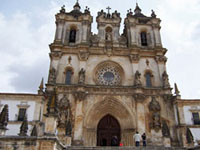 In spite of being based on medieval concepts of justice, such infamous cruelty would give the King the nickname of Pedro the Cruel. Nevertheless, according to the 1891 Hispanic-American Encyclopedia, his entire reign was evidence of his sweet and benevolent character. Of all three Pedros who were reigning in Hispania (Castile, Aragon and Portugal) at the time - all three known by the nickname the Cruel - the Portuguese king was the one who least deserved it. He protected the people and curbed the excesses of the nobility, and so nobles and clergymen nicknamed him the Cruel, while the folks remembered him rather as the Just.
In spite of being based on medieval concepts of justice, such infamous cruelty would give the King the nickname of Pedro the Cruel. Nevertheless, according to the 1891 Hispanic-American Encyclopedia, his entire reign was evidence of his sweet and benevolent character. Of all three Pedros who were reigning in Hispania (Castile, Aragon and Portugal) at the time - all three known by the nickname the Cruel - the Portuguese king was the one who least deserved it. He protected the people and curbed the excesses of the nobility, and so nobles and clergymen nicknamed him the Cruel, while the folks remembered him rather as the Just.
Either way, Pedro's eagerness for justice was great and the painful memories were asking to be avenged. On 12 June 1360, the King announced in Cantanhede that, some years earlier, he had secretly married Inês, in the town of Bragança. The bishop of Guarda, Dom Gil, and one of his servants, Estêvão Lobato, were presented as witnesses of the wedding - although nobody seemed to remember the date when it had taken place. Nevertheless, Inês de Castro was declared Dom Pedro's legitimate wife and therefore the lawful Queen of Portugal. The King then ordered her body to be exhumed and taken from the Monastery of Santa Clara in Coimbra to the Monastery of Alcobaça (the tomb of kings), where she was buried in an extraordinary ceremony, on 2 April 1361.
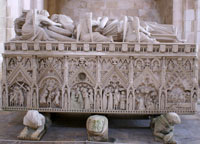
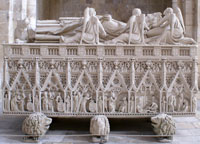 Chronicler Fernão Lopes (ca. 1378-1459) described it thus: "D. Pedro ordered a tomb of white marble, finely surmounted by her crowned statue, as if she was a Queen; and then he caused the tomb to be placed in the Monastery of Alcobaça [...] and made the corpse come from the Monastery of Santa Clara of Coimbra, escorted by many horses and noblemen and maids and clergymen. And all the way through, a thousand men were holding candles, in such a way that always the body was enlightened; and thus it arrived at the Monastery, which was seventeen thousand leagues away from Coimbra, where the body was buried with many religious services and great solemnity. And it was the most magnificent translation ever seen in Portugal". The extraordinary splendour of this unique ceremony was so impressive that Heinrich Schöffer (Historia de Portugal, ed. 1893) described the scene with a memorable metaphor: "Inês de Castro was led to Alcobaça between two lines of stars".
Chronicler Fernão Lopes (ca. 1378-1459) described it thus: "D. Pedro ordered a tomb of white marble, finely surmounted by her crowned statue, as if she was a Queen; and then he caused the tomb to be placed in the Monastery of Alcobaça [...] and made the corpse come from the Monastery of Santa Clara of Coimbra, escorted by many horses and noblemen and maids and clergymen. And all the way through, a thousand men were holding candles, in such a way that always the body was enlightened; and thus it arrived at the Monastery, which was seventeen thousand leagues away from Coimbra, where the body was buried with many religious services and great solemnity. And it was the most magnificent translation ever seen in Portugal". The extraordinary splendour of this unique ceremony was so impressive that Heinrich Schöffer (Historia de Portugal, ed. 1893) described the scene with a memorable metaphor: "Inês de Castro was led to Alcobaça between two lines of stars".
Afterwards, the accounts of Pedro's actions mix reality with legend. Some say that the tomb was placed opposite Pedro's own grave, so that they could look into each other’s eyes on the day of the last judgment. Others go even further and say that, once in Alcobaça, Pedro had Inês placed on the throne, put the royal crown on the skull, and forced the entire court to swear allegiance to the dead Queen, by kissing the hand of the corpse. One thing is known for sure: the eighth King of Portugal was moved by strong feelings that united him to the queen of his heart and, according to the royal chronicler Fernão Lopes, he was consumed by a "great madness".
Inês de Castro in Art and Literature
 The national commotion and the aura that was created around these events were such that Pedro and Inês' love story could not go unnoticed by European writers and artists. The first known literary treatment (by the Jewish David ben Yom Tov Ibn Bilia) dates from the 14th century, and since then the story has inspired a diversity of approaches that is comparable only to the story of Romeo and Juliet. The tragedy of Inês de Castro transcends mundane reality, and her memory has been celebrated everywhere: in epic and lyric poetry, in novels and dramas, in paintings and in music. According to José Hermano Saraiva, more than 120 operas were created about this story in Italy alone. Among these is a famous 18th-century opera by Paisiello and an 1830 ballet entitled Pietro di Portogallo. But, throughout the centuries, the drama was staged in numerous other places (see Ines de Castro in Opera and Ballet, ed. 1952). In Spain there are countless performances of Luis Vélez de Guevara's drama Reinar después de morir (1652), and the same happens in France with Henri de Montherlant's play, La reine morte (1942). Among the houses that have staged the story of Inês, there is also the King's Theatre in the Haymarket, London (where it was performed a musical drama in two acts, back in 1799, as well as what seems to have been an unintentionally burlesque pantomime, in 1833), the Casino at Cannes (where it was performed a highly acclaimed ballet, in 1952), and a theatre in Buenos Aires where a musical was performed for the first time in 1955.
The national commotion and the aura that was created around these events were such that Pedro and Inês' love story could not go unnoticed by European writers and artists. The first known literary treatment (by the Jewish David ben Yom Tov Ibn Bilia) dates from the 14th century, and since then the story has inspired a diversity of approaches that is comparable only to the story of Romeo and Juliet. The tragedy of Inês de Castro transcends mundane reality, and her memory has been celebrated everywhere: in epic and lyric poetry, in novels and dramas, in paintings and in music. According to José Hermano Saraiva, more than 120 operas were created about this story in Italy alone. Among these is a famous 18th-century opera by Paisiello and an 1830 ballet entitled Pietro di Portogallo. But, throughout the centuries, the drama was staged in numerous other places (see Ines de Castro in Opera and Ballet, ed. 1952). In Spain there are countless performances of Luis Vélez de Guevara's drama Reinar después de morir (1652), and the same happens in France with Henri de Montherlant's play, La reine morte (1942). Among the houses that have staged the story of Inês, there is also the King's Theatre in the Haymarket, London (where it was performed a musical drama in two acts, back in 1799, as well as what seems to have been an unintentionally burlesque pantomime, in 1833), the Casino at Cannes (where it was performed a highly acclaimed ballet, in 1952), and a theatre in Buenos Aires where a musical was performed for the first time in 1955.
Nevertheless, it was obviously in Portugal that the story achieved its greatest artistic and literary recognition. Maria Leonor Machado de Castro (Inês de Castro na Literatura Portuguesa, 1984) compiled a few of the innumerable references to the tragedy, from royal chronicles – Fernão Lopes (1380?-1460?), Rui de Pina (1440-1552) and Cristóvão Rodrigues Acenheiro (1474-1536?) – to a long tradition of literary works, which started with Garcia de Resende's 14th-century work Trovas à Morte de D. Inês de Castro and Luís de Camões' 16th century epic poem, Os Lusíadas. Down the centuries, the story has continued to inspire almost all the most renowned Portuguese writers: António Ferreira (1528-1569), Manuel Maria Barbosa du Bocage (1765-1805), Teixeira de Pascoaes (1877-1952), Fernando Pessoa (1888-1935), Miguel Torga (1907-1995), Agustina Bessa-Luís (1922-), Natália Correia (1923-1993), Ruy Belo (1933-1978), Herberto Hélder (1930-), Fiama Hasse Pais Brandão (1938-)... and practically every novelist, poet, and screenwriter of the 20th century, when the story of Inês was brought to the big screen, in movies like Carlos Santos' 1910 silent film Inês de Castro: Rainha depois de Morta, Leitão de Barros' 1944 Inês de Castro or José Carlos de Oliveira's 1997 Inês de Portugal.
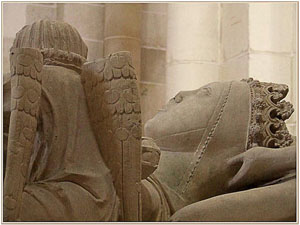
Thus, their love story turned into a myth. “The Queen who was crowned after death" seems not to have died in vain; if not to keep the future of Portugal as graceful as her executioners wanted, at least so that, by dying, she could become the finest representation of the Portuguese "saudade"... that mysterious longing for something that is unfinished and might return in the future. By an ironic fancy of Destiny, Constança's son (Dom Fernando) would be the last king of the First Dynasty, while the heir of the new king, Dom Duarte, would marry, in 1428, to Dona Leonor of Aragon, herself a great-granddaughter of Inês de Castro... After everything, all the kings from the glorious Dynasty of the Discoveries descend from her!
Inês has taken hold of our souls. The royal mistress took leave of her life to become an eternal muse. Nothing is so incorruptible as her death.
*Even though there is no historic evidence relating this estate (now named "Quinta das Lágrimas" [Estate of Tears]) to the love story, some of the most beautiful pages of Portuguese literature have turned it into the backdrop of Pedro and Inês' fortune and misfortune, since the property used to supply water throught an aqueduct that connected the royal palace and the monastery. It was also this water that, according to legend, turned red after the death of Inês, thus feeding the collective imagination of a nation.
Bibliography
“Ines de Castro in Opera and Ballet” in Ballet Today (June, 1952), pp. 18-19.
Lopes, Fernão. Crónica de D. Pedro, 2 ed., Lisboa, Imprensa Nacional-Casa da Moeda, 2007.
Ribeiro, Ângelo. História de Portugal (coord. José Hermano Saraiva), vol. II: A Afirmação do País, Matosinhos, QuidNovi, 2004.
Schöffer, Heinrich. Historia de Portugal desde a Fundação da Monarchia até à Revolução de 1820, Porto, Emp. Editora, 1893.
Sousa, Maria Leonor Machado de. Inês de Castro na Literatura Portuguesa, Lisboa, Instituto de Cultura e Língua Portuguesa, 1984.
Sousa, Maria Leonor Machado de. Inês de Castro: Um Tema Português na Europa, Lisboa, Edições 70, 1987.
Photo Credits
Portrait of Inês de Castro (Anonymous): public domain
Julgamento de Inês de Castro, by Máximo Paulino dos Reis (1861): public domain
Inês de Castro diante dos algozes, by Columbano Bordalo Pinheiro (1857-1929): public domain
Photo of the Monastery of Alcobaça by Flickr member Kent Su and used with permission.
Photos of the tombs of Inês and Dom Pedro by Flickr member filodiniz and used with permission.
A que depois de morta foi rainha, by Lima de Freitas (1927-1998): public domain.
Close-up photo of the effigy of Inês from her tomb by Flickr member mariaugusta and used with permission.
 In spite of being based on medieval concepts of justice, such infamous cruelty would give the King the nickname of Pedro the Cruel. Nevertheless, according to the 1891 Hispanic-American Encyclopedia, his entire reign was evidence of his sweet and benevolent character. Of all three Pedros who were reigning in Hispania (Castile, Aragon and Portugal) at the time - all three known by the nickname the Cruel - the Portuguese king was the one who least deserved it. He protected the people and curbed the excesses of the nobility, and so nobles and clergymen nicknamed him the Cruel, while the folks remembered him rather as the Just.
In spite of being based on medieval concepts of justice, such infamous cruelty would give the King the nickname of Pedro the Cruel. Nevertheless, according to the 1891 Hispanic-American Encyclopedia, his entire reign was evidence of his sweet and benevolent character. Of all three Pedros who were reigning in Hispania (Castile, Aragon and Portugal) at the time - all three known by the nickname the Cruel - the Portuguese king was the one who least deserved it. He protected the people and curbed the excesses of the nobility, and so nobles and clergymen nicknamed him the Cruel, while the folks remembered him rather as the Just.Either way, Pedro's eagerness for justice was great and the painful memories were asking to be avenged. On 12 June 1360, the King announced in Cantanhede that, some years earlier, he had secretly married Inês, in the town of Bragança. The bishop of Guarda, Dom Gil, and one of his servants, Estêvão Lobato, were presented as witnesses of the wedding - although nobody seemed to remember the date when it had taken place. Nevertheless, Inês de Castro was declared Dom Pedro's legitimate wife and therefore the lawful Queen of Portugal. The King then ordered her body to be exhumed and taken from the Monastery of Santa Clara in Coimbra to the Monastery of Alcobaça (the tomb of kings), where she was buried in an extraordinary ceremony, on 2 April 1361.

 Chronicler Fernão Lopes (ca. 1378-1459) described it thus: "D. Pedro ordered a tomb of white marble, finely surmounted by her crowned statue, as if she was a Queen; and then he caused the tomb to be placed in the Monastery of Alcobaça [...] and made the corpse come from the Monastery of Santa Clara of Coimbra, escorted by many horses and noblemen and maids and clergymen. And all the way through, a thousand men were holding candles, in such a way that always the body was enlightened; and thus it arrived at the Monastery, which was seventeen thousand leagues away from Coimbra, where the body was buried with many religious services and great solemnity. And it was the most magnificent translation ever seen in Portugal". The extraordinary splendour of this unique ceremony was so impressive that Heinrich Schöffer (Historia de Portugal, ed. 1893) described the scene with a memorable metaphor: "Inês de Castro was led to Alcobaça between two lines of stars".
Chronicler Fernão Lopes (ca. 1378-1459) described it thus: "D. Pedro ordered a tomb of white marble, finely surmounted by her crowned statue, as if she was a Queen; and then he caused the tomb to be placed in the Monastery of Alcobaça [...] and made the corpse come from the Monastery of Santa Clara of Coimbra, escorted by many horses and noblemen and maids and clergymen. And all the way through, a thousand men were holding candles, in such a way that always the body was enlightened; and thus it arrived at the Monastery, which was seventeen thousand leagues away from Coimbra, where the body was buried with many religious services and great solemnity. And it was the most magnificent translation ever seen in Portugal". The extraordinary splendour of this unique ceremony was so impressive that Heinrich Schöffer (Historia de Portugal, ed. 1893) described the scene with a memorable metaphor: "Inês de Castro was led to Alcobaça between two lines of stars".Afterwards, the accounts of Pedro's actions mix reality with legend. Some say that the tomb was placed opposite Pedro's own grave, so that they could look into each other’s eyes on the day of the last judgment. Others go even further and say that, once in Alcobaça, Pedro had Inês placed on the throne, put the royal crown on the skull, and forced the entire court to swear allegiance to the dead Queen, by kissing the hand of the corpse. One thing is known for sure: the eighth King of Portugal was moved by strong feelings that united him to the queen of his heart and, according to the royal chronicler Fernão Lopes, he was consumed by a "great madness".
Inês de Castro in Art and Literature
 The national commotion and the aura that was created around these events were such that Pedro and Inês' love story could not go unnoticed by European writers and artists. The first known literary treatment (by the Jewish David ben Yom Tov Ibn Bilia) dates from the 14th century, and since then the story has inspired a diversity of approaches that is comparable only to the story of Romeo and Juliet. The tragedy of Inês de Castro transcends mundane reality, and her memory has been celebrated everywhere: in epic and lyric poetry, in novels and dramas, in paintings and in music. According to José Hermano Saraiva, more than 120 operas were created about this story in Italy alone. Among these is a famous 18th-century opera by Paisiello and an 1830 ballet entitled Pietro di Portogallo. But, throughout the centuries, the drama was staged in numerous other places (see Ines de Castro in Opera and Ballet, ed. 1952). In Spain there are countless performances of Luis Vélez de Guevara's drama Reinar después de morir (1652), and the same happens in France with Henri de Montherlant's play, La reine morte (1942). Among the houses that have staged the story of Inês, there is also the King's Theatre in the Haymarket, London (where it was performed a musical drama in two acts, back in 1799, as well as what seems to have been an unintentionally burlesque pantomime, in 1833), the Casino at Cannes (where it was performed a highly acclaimed ballet, in 1952), and a theatre in Buenos Aires where a musical was performed for the first time in 1955.
The national commotion and the aura that was created around these events were such that Pedro and Inês' love story could not go unnoticed by European writers and artists. The first known literary treatment (by the Jewish David ben Yom Tov Ibn Bilia) dates from the 14th century, and since then the story has inspired a diversity of approaches that is comparable only to the story of Romeo and Juliet. The tragedy of Inês de Castro transcends mundane reality, and her memory has been celebrated everywhere: in epic and lyric poetry, in novels and dramas, in paintings and in music. According to José Hermano Saraiva, more than 120 operas were created about this story in Italy alone. Among these is a famous 18th-century opera by Paisiello and an 1830 ballet entitled Pietro di Portogallo. But, throughout the centuries, the drama was staged in numerous other places (see Ines de Castro in Opera and Ballet, ed. 1952). In Spain there are countless performances of Luis Vélez de Guevara's drama Reinar después de morir (1652), and the same happens in France with Henri de Montherlant's play, La reine morte (1942). Among the houses that have staged the story of Inês, there is also the King's Theatre in the Haymarket, London (where it was performed a musical drama in two acts, back in 1799, as well as what seems to have been an unintentionally burlesque pantomime, in 1833), the Casino at Cannes (where it was performed a highly acclaimed ballet, in 1952), and a theatre in Buenos Aires where a musical was performed for the first time in 1955.Nevertheless, it was obviously in Portugal that the story achieved its greatest artistic and literary recognition. Maria Leonor Machado de Castro (Inês de Castro na Literatura Portuguesa, 1984) compiled a few of the innumerable references to the tragedy, from royal chronicles – Fernão Lopes (1380?-1460?), Rui de Pina (1440-1552) and Cristóvão Rodrigues Acenheiro (1474-1536?) – to a long tradition of literary works, which started with Garcia de Resende's 14th-century work Trovas à Morte de D. Inês de Castro and Luís de Camões' 16th century epic poem, Os Lusíadas. Down the centuries, the story has continued to inspire almost all the most renowned Portuguese writers: António Ferreira (1528-1569), Manuel Maria Barbosa du Bocage (1765-1805), Teixeira de Pascoaes (1877-1952), Fernando Pessoa (1888-1935), Miguel Torga (1907-1995), Agustina Bessa-Luís (1922-), Natália Correia (1923-1993), Ruy Belo (1933-1978), Herberto Hélder (1930-), Fiama Hasse Pais Brandão (1938-)... and practically every novelist, poet, and screenwriter of the 20th century, when the story of Inês was brought to the big screen, in movies like Carlos Santos' 1910 silent film Inês de Castro: Rainha depois de Morta, Leitão de Barros' 1944 Inês de Castro or José Carlos de Oliveira's 1997 Inês de Portugal.

Thus, their love story turned into a myth. “The Queen who was crowned after death" seems not to have died in vain; if not to keep the future of Portugal as graceful as her executioners wanted, at least so that, by dying, she could become the finest representation of the Portuguese "saudade"... that mysterious longing for something that is unfinished and might return in the future. By an ironic fancy of Destiny, Constança's son (Dom Fernando) would be the last king of the First Dynasty, while the heir of the new king, Dom Duarte, would marry, in 1428, to Dona Leonor of Aragon, herself a great-granddaughter of Inês de Castro... After everything, all the kings from the glorious Dynasty of the Discoveries descend from her!
Inês has taken hold of our souls. The royal mistress took leave of her life to become an eternal muse. Nothing is so incorruptible as her death.
*Even though there is no historic evidence relating this estate (now named "Quinta das Lágrimas" [Estate of Tears]) to the love story, some of the most beautiful pages of Portuguese literature have turned it into the backdrop of Pedro and Inês' fortune and misfortune, since the property used to supply water throught an aqueduct that connected the royal palace and the monastery. It was also this water that, according to legend, turned red after the death of Inês, thus feeding the collective imagination of a nation.
Bibliography
“Ines de Castro in Opera and Ballet” in Ballet Today (June, 1952), pp. 18-19.
Lopes, Fernão. Crónica de D. Pedro, 2 ed., Lisboa, Imprensa Nacional-Casa da Moeda, 2007.
Ribeiro, Ângelo. História de Portugal (coord. José Hermano Saraiva), vol. II: A Afirmação do País, Matosinhos, QuidNovi, 2004.
Schöffer, Heinrich. Historia de Portugal desde a Fundação da Monarchia até à Revolução de 1820, Porto, Emp. Editora, 1893.
Sousa, Maria Leonor Machado de. Inês de Castro na Literatura Portuguesa, Lisboa, Instituto de Cultura e Língua Portuguesa, 1984.
Sousa, Maria Leonor Machado de. Inês de Castro: Um Tema Português na Europa, Lisboa, Edições 70, 1987.
Photo Credits
Portrait of Inês de Castro (Anonymous): public domain
Julgamento de Inês de Castro, by Máximo Paulino dos Reis (1861): public domain
Inês de Castro diante dos algozes, by Columbano Bordalo Pinheiro (1857-1929): public domain
Photo of the Monastery of Alcobaça by Flickr member Kent Su and used with permission.
Photos of the tombs of Inês and Dom Pedro by Flickr member filodiniz and used with permission.
A que depois de morta foi rainha, by Lima de Freitas (1927-1998): public domain.
Close-up photo of the effigy of Inês from her tomb by Flickr member mariaugusta and used with permission.
